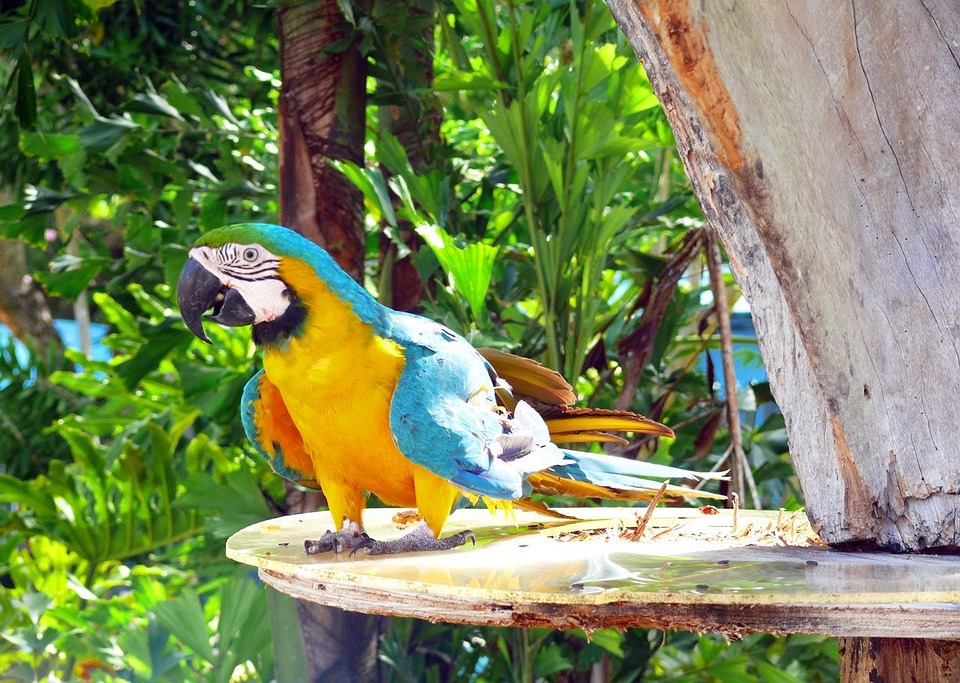Teaching Your Parrot to Spin or Shake Hands: A Comprehensive Guide
Introduction:
Training your parrot can be a rewarding and enjoyable experience for both you and your feathered friend. Not only does it stimulate their minds, but it also strengthens the bond between you and your parrot. In this comprehensive guide, we will explore the benefits of teaching tricks to parrots and provide step-by-step instructions on how to teach your parrot to spin and shake hands.
Understanding Parrot Training Basics:
Before diving into the specific tricks, it is important to understand some basic principles of parrot training. Positive reinforcement is key when training your parrot. By rewarding desired behaviors with treats and praise, you are encouraging your parrot to repeat those behaviors. Building trust and bonding with your parrot is also crucial, as it creates a strong foundation for effective training. Additionally, clicker training or target training can be useful tools for teaching tricks to your parrot.
Step-by-Step Guide: Teaching Your Parrot to Spin:
1. Create a Positive Training Environment:
Choose a quiet and distraction-free area for training. This will help your parrot focus and limit any outside influences. Gather treats and rewards that your parrot loves, such as small pieces of fruits or nuts.
2. Targeting Technique for Spin:
Introduce a target stick or your finger as a target for your parrot. Encourage your parrot to touch or follow the target, and reward them each time they do so.
3. Shaping Behavior:
Break down the spin behavior into manageable steps. Start by rewarding your parrot for turning their head in the desired direction. Gradually increase the criteria, rewarding them for turning their body slightly, and eventually completing a full spin.
4. Adding a Cue:
Introduce a verbal or visual cue for the spin behavior. Pair the cue with the action of your parrot spinning and reward them accordingly. Consistency is key in establishing the association between the cue and the behavior.
5. Reinforcement and Practice:
Gradually reduce the use of treats and rewards, relying more on verbal praise and physical affection. Consistently reinforce the spin behavior through regular practice sessions, ensuring that your parrot maintains their skills.
Step-by-Step Guide: Teaching Your Parrot to Shake Hands:
1. Establishing a Positive Training Environment:
Select a calm and quiet space for training. Gather treats and rewards that your parrot enjoys, such as small pieces of fruits or nuts.
2. Hand Targeting Technique:
Introduce your hand as a target for your parrot. Encourage them to touch or step onto your hand, and reward them each time they do so.
3. Shaping Behavior:
Break down the shake hands behavior into manageable steps. Start by rewarding your parrot for touching your hand with their foot, and gradually increase the criteria to include them lifting their foot and extending it towards your hand.
4. Adding a Cue:
Introduce a verbal or visual cue for the shake hands behavior. Pair the cue with the action of your parrot shaking hands and reward them accordingly. Consistency is important in establishing the association between the cue and the behavior.
5. Reinforcement and Practice:
Gradually reduce the use of treats and rewards, relying more on verbal praise and physical affection. Consistently reinforce the shake hands behavior through regular practice sessions, ensuring that your parrot maintains their skills.
FAQs (Frequently Asked Questions):
1. Can any parrot learn these tricks?
Most parrot species can be trained, but it’s important to note that individual parrots may vary in their temperament and willingness to learn.
2. How long does it take to teach a parrot these tricks?
Patience and consistency are key. The learning speed may vary based on the parrot’s abilities and previous training experience.
3. Can older parrots learn new tricks?
Yes, parrots of any age can learn new behaviors. However, older parrots may require additional time and patience during training.
4. What treats should I use for training?
Use healthy and parrot-safe treats, such as small pieces of fruits or nuts. It’s important to choose treats that your parrot finds appealing.
5. What if my parrot doesn’t seem interested in learning these tricks?
Reevaluate the training environment and approach. It may be helpful to seek guidance from a professional parrot trainer for additional support.
Conclusion:
Teaching your parrot to spin or shake hands can be a fun and rewarding experience. By following the step-by-step guides and practicing patience, consistency, and positive reinforcement, you can successfully train your parrot to perform these tricks. Remember to celebrate the bond and accomplishment achieved through trick training, and enjoy the journey with your clever and talented parrot.









